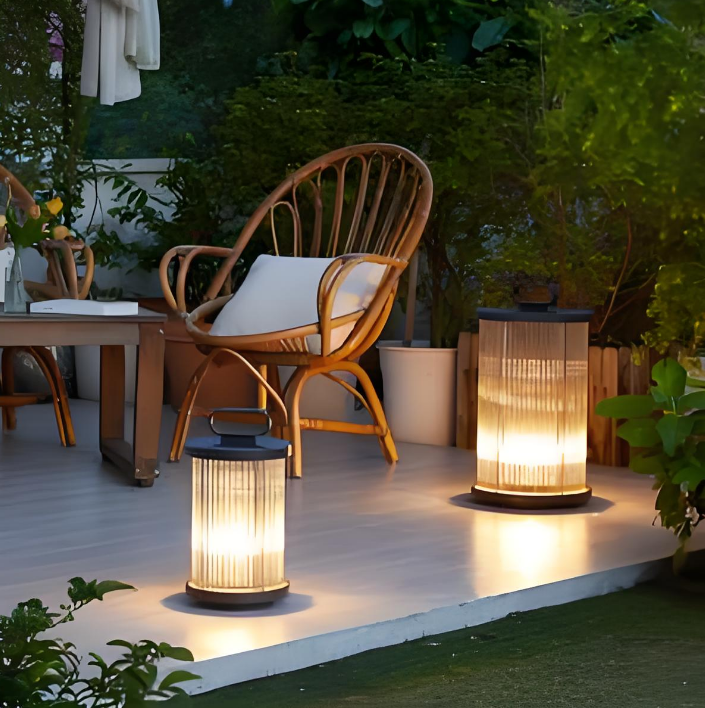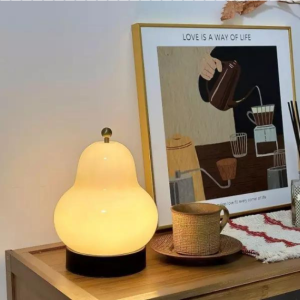
Illuminate your Garden: Enhance Outdoor Ambiance with Garden Lights
Garden lighting is an essential aspect of garden design that can transform your outdoor space into a magical and inviting oasis. By strategically placing lights throughout your garden, you can enhance its beauty, increase safety and security, and create a warm and inviting atmosphere for entertaining.
One of the main benefits of garden lighting is its ability to enhance the beauty of your garden. By illuminating key features such as trees, plants, and architectural elements, you can create a stunning visual display that highlights the unique characteristics of your garden. Whether you have a small courtyard or a sprawling landscape, garden lighting can add depth and dimension to your outdoor space, making it more visually appealing.
In addition to enhancing the beauty of your garden, lighting can also increase safety and security. By illuminating pathways, steps, and entrances, you can prevent accidents and make it easier for guests to navigate your garden at night. Furthermore, well-lit outdoor spaces are less attractive to potential intruders, making your home more secure.
Types of Garden Lights: Choosing the Right Lighting for Your Garden
When it comes to choosing garden lights, there are several options to consider. The most common types of garden lights include path lights, spotlights, floodlights, string lights, and lanterns. Each type of light serves a different purpose and creates a different effect in your garden.
When choosing garden lights, it’s important to consider factors such as the size and layout of your garden, the style of your home, and your personal preferences. For example, if you have a small garden with limited space, you may want to opt for compact path lights or string lights that can be easily installed without taking up too much space. On the other hand, if you have a large garden with expansive lawns and tall trees, you may want to consider installing spotlights or floodlights to highlight key features.
There are also several popular garden lighting brands that offer a wide range of high-quality lights. Some of the top brands include Philips, Kichler, Hinkley, and Hampton Bay. These brands are known for their innovative designs, durable construction, and energy-efficient features.
Planning Your Garden Lighting Design: Tips and Tricks
Before you start installing garden lights homenoco, it’s important to assess your garden’s lighting needs and create a lighting plan. This will help you determine the best placement for lights and ensure that you achieve the desired effect in your garden.
To assess your garden’s lighting needs, take a walk around your garden at night and identify areas that are dark or poorly lit. These areas may include pathways, seating areas, and key features such as trees or sculptures. Once you have identified these areas, think about how you can incorporate lights to enhance their visibility and create a focal point.
Once you have assessed your garden’s lighting needs, it’s time to create a lighting plan. Start by sketching a rough layout of your garden and marking the areas where you want to install lights. Consider the type of lights you want to use in each area and how they will be powered. For example, if you are using solar-powered lights, make sure that they will receive enough sunlight during the day to charge the batteries.
When installing garden lights, there are a few tips to keep in mind. First, make sure that the lights are properly grounded to prevent electrical hazards. Second, consider using timers or motion sensors to automatically turn on the lights at dusk and off at dawn. This will save energy and ensure that your garden is always well-lit. Finally, be mindful of light pollution and choose lights with shields or hoods to direct the light downward and minimize glare.
Garden Lighting Techniques: Highlighting Features and Creating a Focal Point
One of the key techniques for garden lighting is highlighting key features and creating a focal point. By strategically placing lights around trees, plants, sculptures, or architectural elements, you can draw attention to these features and create a stunning visual display.
To highlight trees and plants, consider using uplights or spotlights placed at the base of the tree or plant. This will create a dramatic effect by casting shadows and highlighting the unique shape and texture of the foliage. For larger trees, you may want to use multiple lights to ensure that the entire tree is illuminated.
Another technique for creating a focal point is using color in garden lighting. By using colored filters or bulbs, you can create a vibrant and eye-catching display. For example, you can use blue lights to create a calming and serene atmosphere, or red lights to create a warm and inviting ambiance.
When using color in garden lighting, it’s important to consider the overall color scheme of your garden and choose colors that complement the existing plants and flowers. You can also experiment with different colors throughout the year to create seasonal displays.
Lighting Up Your Pathways: Enhancing Safety and Security
Pathway lighting is an important aspect of garden lighting as it enhances safety and security while adding visual interest to your outdoor space. By illuminating pathways, steps, and entrances, you can prevent accidents and make it easier for guests to navigate your garden at night.
There are several types of pathway lights to choose from, including stake lights, bollard lights, and recessed lights. Stake lights are easy to install as they simply need to be pushed into the ground along the pathway. Bollard lights are taller and provide more light, making them ideal for larger pathways or driveways. Recessed lights are installed flush with the ground and provide a subtle and seamless lighting effect.
When installing pathway lights, it’s important to consider the spacing between each light. Ideally, lights should be placed about 6-8 feet apart to ensure even illumination. You should also consider the height of the lights and make sure that they are not obstructed by plants or other objects.
To enhance safety and security, consider using motion sensor lights along pathways or near entrances. These lights will automatically turn on when someone approaches, providing a well-lit path and deterring potential intruders.
Accentuating Trees and Plants: Adding Drama to Your Garden

Accentuating trees and plants with lighting is a great way to add drama and visual interest to your garden. By strategically placing lights around trees and plants, you can create a stunning display that highlights their unique shape, texture, and color.
When accentuating trees, consider using uplights or spotlights placed at the base of the tree. This will create a dramatic effect by casting shadows and highlighting the branches and foliage. For larger trees, you may want to use multiple lights to ensure that the entire tree is illuminated.
When accentuating plants, consider using well lights or downlights placed above or below the plant. Well lights are buried in the ground and provide a subtle and seamless lighting effect. Downlights are installed above the plant and cast a soft and diffused light downward.
When choosing lights for trees and plants, it’s important to consider their size and shape. For example, tall and slender trees may require narrow beam spotlights to effectively illuminate the entire tree. On the other hand, bushy plants may require well lights or downlights to create an even illumination.
When installing tree and plant lights, make sure that the lights are properly grounded to prevent electrical hazards. You should also consider using timers or motion sensors to automatically turn on the lights at dusk and off at dawn.
Creating a Warm and Inviting Atmosphere: Using Soft Lighting
Soft lighting is an important aspect of garden design as it creates a warm and inviting atmosphere. By using soft lighting techniques, you can transform your garden into a cozy and intimate space that is perfect for relaxing or entertaining.
There are several types of soft lighting that you can use in your garden, including string lights, lanterns, and candles. String lights are versatile and can be hung from trees, pergolas, or fences to create a magical and whimsical effect. Lanterns can be placed on tables or hung from hooks to create a cozy and intimate ambiance. Candles can be placed in lanterns or candle holders to create a soft and flickering light.
When using soft lighting, it’s important to consider the placement and spacing of the lights. For example, if you are using string lights, make sure that they are evenly spaced and not too close together. This will create a more natural and organic look.
You should also consider the color temperature of the lights. Soft white or warm white lights are ideal for creating a cozy and inviting atmosphere. Avoid using cool white lights as they can create a harsh and uninviting ambiance.
Garden Lighting for Entertaining: Setting the Mood for Outdoor Parties
Garden lighting is an essential aspect of outdoor entertaining as it helps set the mood and create a festive atmosphere. By strategically placing lights around seating areas, dining areas, and entertainment areas, you can create a welcoming and inviting space for your guests.
One of the key techniques for setting the mood with lighting is using different levels of light. For example, you can use bright lights to illuminate the main seating or dining area, and softer lights to create a more intimate ambiance in other areas of your garden.
You can also use colored lights or decorative string lights to add a festive touch to your outdoor parties. For example, you can use colored string lights to create a vibrant and playful atmosphere, or white string lights to create an elegant and sophisticated ambiance.
When installing party lights, consider using weatherproof and durable lights that can withstand outdoor conditions. You should also consider using timers or dimmers to control the intensity of the lights and create different lighting effects throughout the evening.
Energy-Efficient Garden Lighting: Saving Money and the Environment
Energy-efficient garden lighting is not only good for the environment, but it can also save you money on your energy bills. By choosing energy-efficient lights and following a few simple tips, you can reduce your energy consumption and minimize your carbon footprint.
There are several types of energy-efficient garden lights to choose from, including LED lights, solar-powered lights, and low-voltage lights. LED lights are highly energy-efficient and can last up to 25 times longer than traditional incandescent bulbs. Solar-powered lights use renewable energy from the sun to power the lights, making them a sustainable and cost-effective option. Low-voltage lights use less electricity than traditional high-voltage lights, making them more energy-efficient.
To further reduce your energy consumption, consider using timers or motion sensors to automatically turn on the lights at dusk and off at dawn. This will ensure that your garden is always well-lit while minimizing unnecessary energy usage.
You should also consider using outdoor lighting fixtures that are designed for energy efficiency. Look for fixtures that are ENERGY STAR certified, as they meet strict energy efficiency guidelines set by the U.S. Environmental Protection Agency.
Maintenance and Safety Tips: Keeping Your Garden Lighting in Top Condition
Maintaining your garden lights is essential to ensure that they continue to function properly and provide optimal illumination. By following a few simple maintenance tips, you can keep your garden lighting in top condition for years to come.
One of the most important maintenance tasks is cleaning the lights regularly. Dust, dirt, and debris can accumulate on the surface of the lights and reduce their brightness. To clean the lights, simply wipe them with a soft cloth or sponge dipped in soapy water. Avoid using abrasive cleaners or solvents as they can damage the lights.
You should also check the wiring and connections of your garden lights regularly to ensure that they are secure and free from damage. Loose or damaged wiring can pose a safety hazard and reduce the effectiveness of the lights. If you notice any loose or damaged wiring, it’s important to repair or replace it as soon as possible.
In addition to regular maintenance, it’s important to follow safety guidelines when installing and using garden lights. Make sure that the lights are properly grounded to prevent electrical hazards. Avoid overloading electrical circuits by using the appropriate wattage for each light. Finally, be mindful of light pollution and choose lights with shields or hoods to direct the light downward and minimize glare.
Garden lighting is an essential aspect of garden design that can enhance the beauty of your outdoor space while increasing safety and security. By choosing the right lights, planning your lighting design, and following maintenance and safety tips, you can create a stunning garden that you can enjoy day and night. Whether you want to highlight key features, create a warm and inviting atmosphere, or set the mood for outdoor parties, garden lighting offers endless possibilities for transforming your outdoor space into a magical oasis. So why wait? Start illuminating your garden today and enjoy its beauty day and night.


